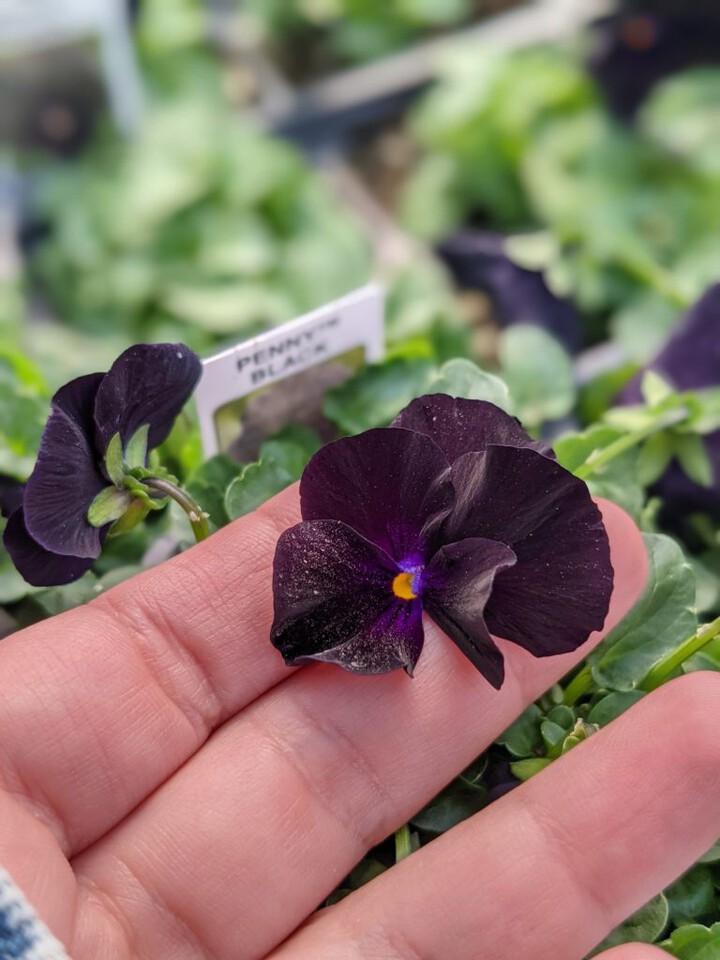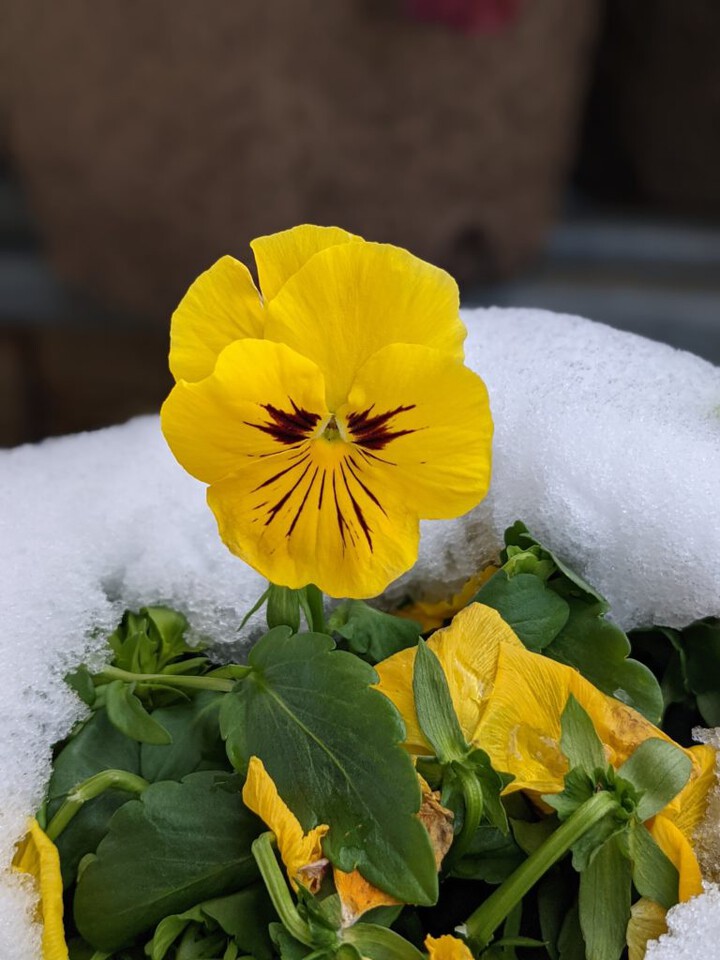Scientific Name: Viola x wittrockiana
Common Name: Pansy
Common Species/Varieties: Bolero, Cool Wave, Joker, Black Magic
Common Colors: Available in nearly all colors, most often found in cool colors
Plant Type: Flower
Annual or Perennial: Perennial, usually grown as an Annual
Hardiness Zone: 7-10 USDA
Self-Seeding: Somewhat, but not prolific
Bloom Season: Late winter to Early Summer
Grows Best In: Cool weather or heavily shaded areas once warmer weather sets in

Fun Fact: Pansies are very cold hardy plants. Any blooms already open may die in a deep freeze, but if the freeze is temporary, the plant itself will survive and bloom again.
“Don’t be a pansy” is a phrase commonly used when the speaker is calling someone out for appearing weak – but this phrase is quite inaccurate as Pansies are rather tough little flowers! Pansies can survive low and even freezing temperatures, and not many flowering plants can boast that ability. They are quite tough, and can even stick around once hot temperatures arrive if planted in a cool or shaded area.
Pansies are edible and are often used as decorative live flowers on baked goods. They make a beautiful addition to spring rolls, as well. They can even be frozen into ice cubes for use in cocktails or a delicious lemonade!
While Pansies may not flower in the heat of the summer, they are likely to bloom again in Fall when temperatures cool down again. They may go dormant but the green leaves of the plant are absorbing energy from the sun as the plant avoids blooming in order to gather its resources for another round of beautiful blooming “faces” in the Fall. If Pansies grow leggy (tall and stretched out), they likely need more sun. If planting Pansies in bright sun, plant them near other plants that will provide shade during the summer. Deadhead the blooms (nip the spent blooms before they expire completely) to encourage more flowers. Keep Pansies relatively moist (don’t drown them, but don’t allow them to dry out) and remember to water in Summer to encourage re-blooming in Fall.

Pansies symbolise sympathy and care, and are also known to represent free thinking. William Shakespeare mentions Pansies in A Midsummer Night’s Dream, Hamlet, and The Taming of the Shrew. Most often they represent love or affection in Shakespeare’s plays. Historically, pansies were used to treat eczema, convulsions, and inflammation (always consult a physician before employing the use of herbal or plant medicine). Pansy’s cousin, Violet, is the birth flower for the month of February, along with Primrose.